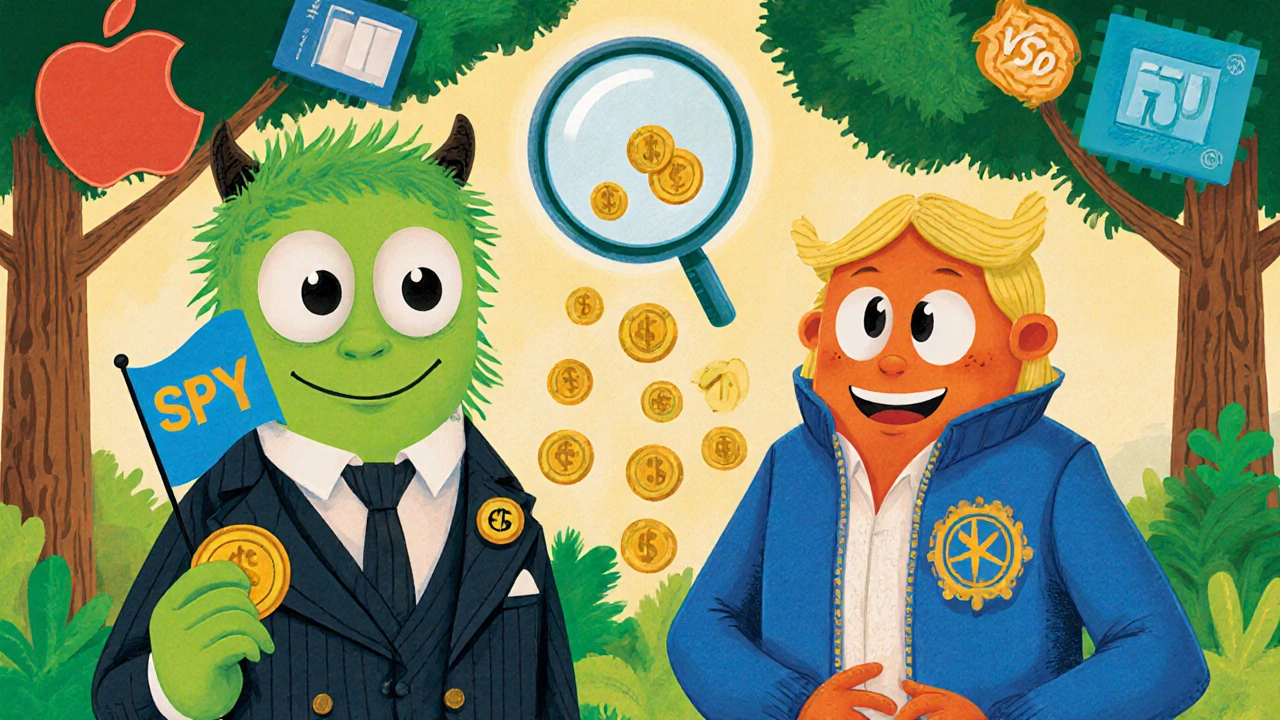ETF Fees: What You Pay and How It Slashes Your Returns
When you buy an ETF fee, the annual cost of owning an exchange-traded fund, usually expressed as a percentage of your investment. Also known as an expense ratio, it's the one cost you can't avoid if you own the fund. It doesn't show up as a separate charge on your statement. Instead, it's quietly taken out of the fund’s assets every day—like a tiny tax on your growth. Most people don’t notice it until they look at their returns over five or ten years and realize they’re way behind where they should be.
That’s because ETF fees directly reduce your compound growth. A 0.5% fee might sound tiny, but over 20 years, it can cut your final balance by more than 10%. Compare that to a 0.03% fund—the difference isn’t just about cost, it’s about how much of your money stays working for you. The best ETFs don’t just track the market well—they do it cheaply. And that’s why investors who care about long-term returns always check the expense ratio before buying. Related to this are expense ratio, the annual fee charged by a fund to cover management and operational costs, and passive investing, a strategy that aims to match market returns by holding low-cost index funds instead of trying to beat them. These aren’t just buzzwords—they’re the foundation of smart, long-term investing.
Not all ETFs are created equal. Some charge 10 times more than others for the same exposure. You’ll find high fees in niche sectors, actively managed ETFs, or funds that trade exotic assets. Meanwhile, broad-market ETFs like those tracking the S&P 500 often cost less than 0.03%. The gap isn’t about performance—it’s about structure. Passive funds don’t need expensive traders or research teams. They just hold what’s in the index. That’s why the cheapest ETFs often outperform the expensive ones over time. And if you’re using ETFs to build a portfolio, every 0.1% you save adds up to thousands over decades.
It’s not just about the headline fee. Hidden costs like bid-ask spreads, trading commissions (if your broker charges them), and tax inefficiency can add more than you think. But the expense ratio? That’s the one number you can control. Pick low-cost ETFs, avoid chasing performance, and keep your portfolio simple. You don’t need fancy funds to build wealth—you just need to keep more of your money working for you. Below, you’ll find real-world breakdowns of the most common ETFs, comparisons of fees across platforms, and clear examples of how even small differences in cost change your outcome over time.




